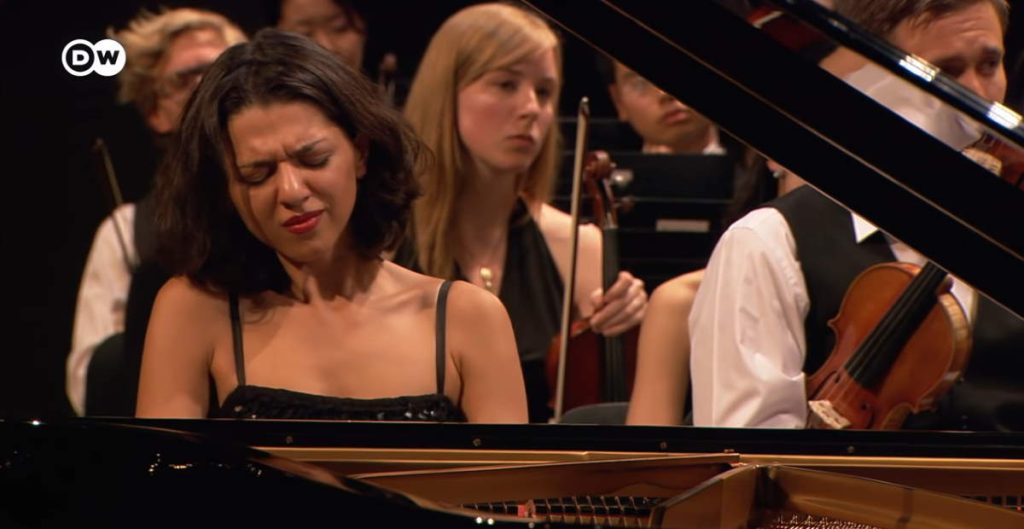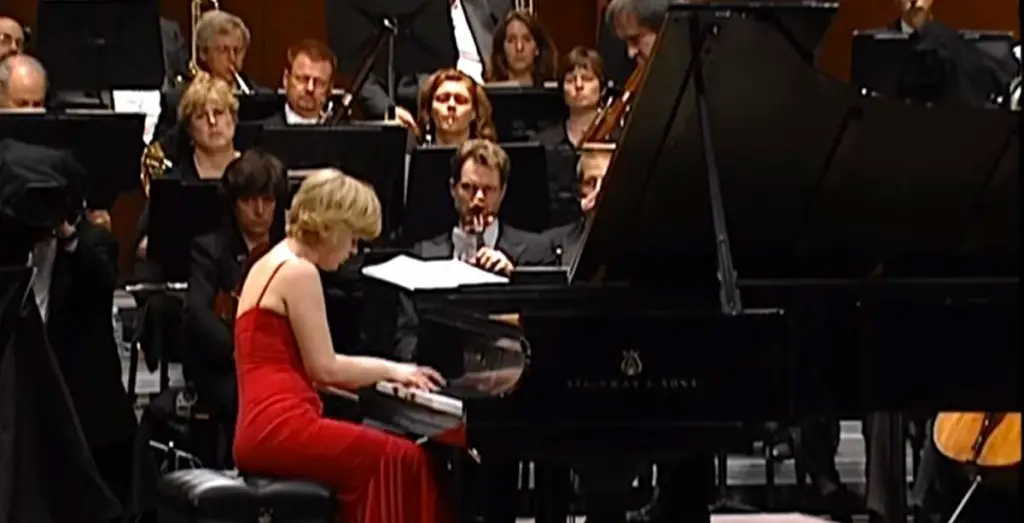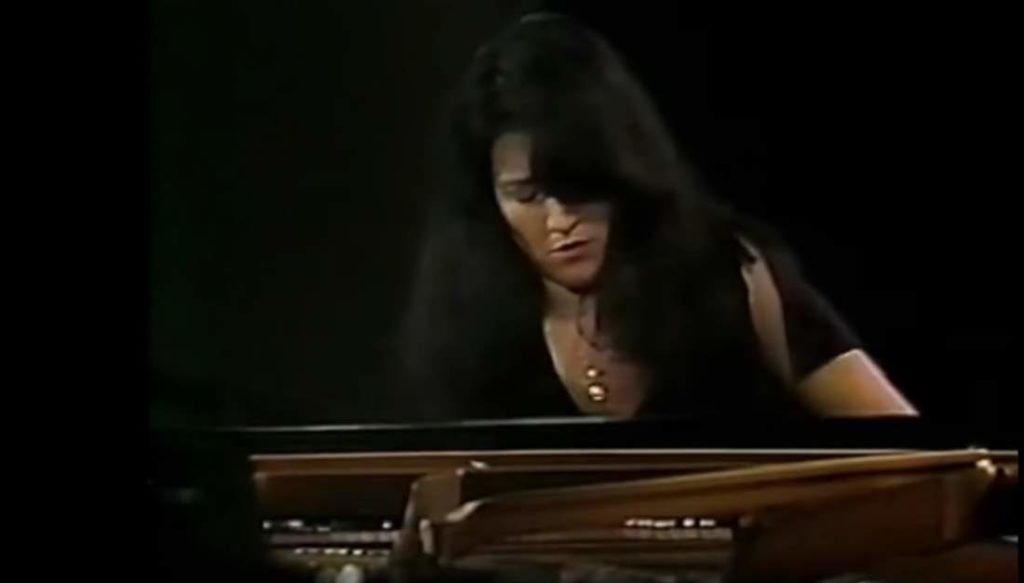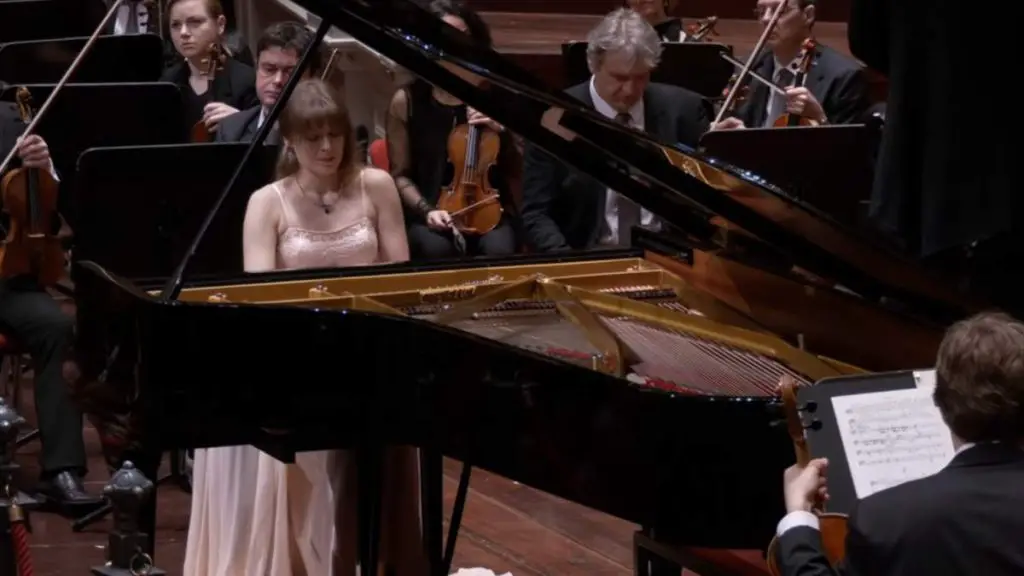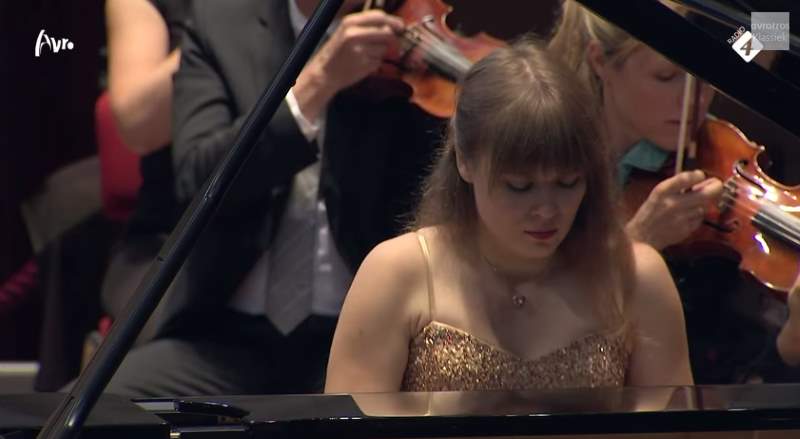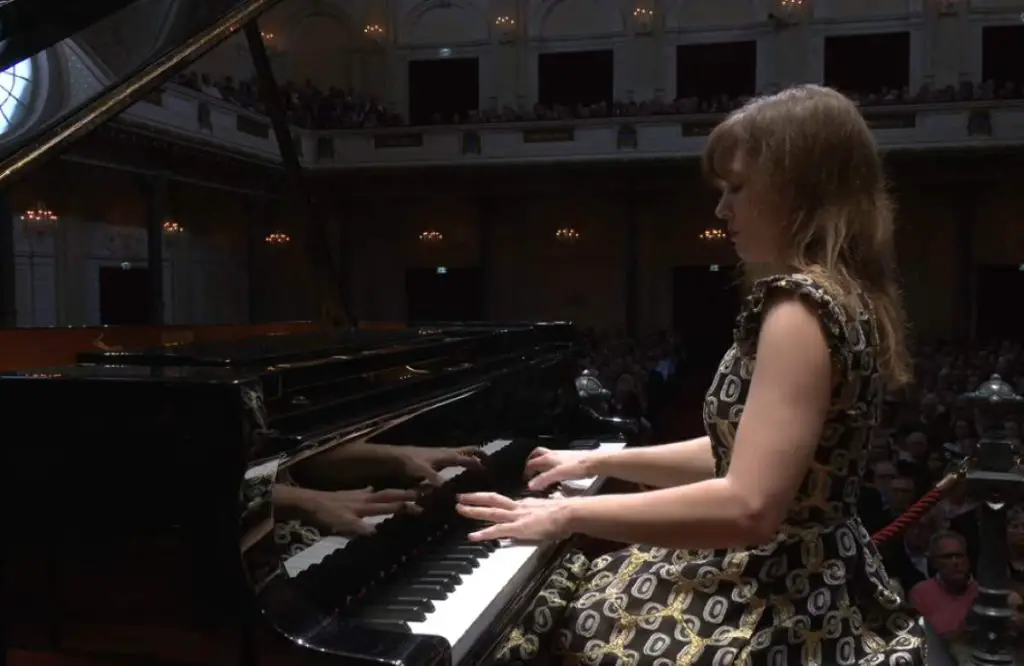Accompanied by the Nordwestdeutsche Philharmonie (North West German Philharmonic), Ukrainian concert pianist Anna Fedorova performs Sergei Rachmaninoff’s Piano Concerto No. 3, Op. 30. Composed in 1909, the work is widely regarded as one of the most technically challenging piano concertos in the standard classical repertoire. Conductor: Gerard Oskamp.
Sergei Rachmaninoff’s Piano Concerto No. 3
Sergei Rachmaninoff’s Piano Concerto No. 3 in D minor, Op. 30, stands as one of the pinnacles of the Romantic piano repertoire, renowned for its technical challenges, emotional depth, and musical complexity. Composed in 1909, this concerto was intended for Rachmaninoff’s first concert tour of the United States. It quickly became notorious for its demands on the soloist, requiring not only exceptional technical skill but also profound musicality and endurance. The concerto has since occupied a revered place in the piano literature, celebrated and feared by pianists for its formidable difficulties.
The genesis of the Piano Concerto No. 3 coincided with a period of significant transition in Rachmaninoff’s life, as he was about to embark on his American tour. He composed the concerto with his own virtuosic abilities in mind, showcasing his dual talents as a composer and pianist. The work’s premiere, with Rachmaninoff himself at the piano and Walter Damrosch conducting the New York Symphony Society, was a critical success and marked the beginning of Rachmaninoff’s long and fruitful relationship with American audiences.
Musically, the concerto is characterized by its lush melodies, rich orchestral textures, and intricate interplay between the piano and orchestra. Rachmaninoff’s compositional style merges traditional Russian musical elements with a broader Romantic idiom, creating a work that is both personal and universally expressive. The concerto’s thematic material is notable for its lyrical beauty and emotional range, exploring themes of longing, passion, and transcendence.
Structurally, the concerto is traditional, comprising three movements that follow the fast-slow-fast format typical of concertos. However, Rachmaninoff’s treatment of form and development is anything but conventional. He weaves together themes and motifs across the movements, creating a sense of unity and narrative progression that is cinematic in scope. The concerto’s orchestration further enhances its dramatic impact, with Rachmaninoff employing the full palette of the orchestra to support and dialogue with the piano.
The technical challenges of Piano Concerto No. 3 are legendary, encompassing virtuosic passages of octaves, arpeggios, and rapid fingerwork, as well as moments requiring a delicate touch and nuanced expression. The work demands a rare combination of physical stamina and interpretative insight, making it a true test of a pianist’s capabilities.
Despite its initial reputation for difficulty, the Piano Concerto No. 3 has become one of Rachmaninoff’s most beloved works, admired for its melodic inventiveness, emotional depth, and virtuosic fireworks. It remains a staple of the concert repertoire, a testament to Rachmaninoff’s genius as a composer and his understanding of the piano’s expressive possibilities.
The concerto is one of the main foci of the 1996 film Shine, based on the life of the Australian concert pianist David Helfgott (born 19 May 1947).
Rachmaninoff’s Piano Concerto No. 3 is scored for 2 flutes, 2 oboes, 2 clarinets, 2 bassoons, 4 horns, 2 trumpets, 3 trombones, tuba, timpani, bass drum, snare drum, cymbals, piano, and strings. It is in three movements.
Movements
With start times in the video:
- Allegro ma non tanto [00:22]
- Intermezzo: Adagio [19:08]
- Finale: Alla breve [30:15]
1. Allegro ma non tanto
The first movement of Sergei Rachmaninoff’s Piano Concerto No. 3 in D minor, Op. 30, is marked “Allegro ma non tanto” and sets the stage for the concerto’s dramatic and emotional depth. This movement is a showcase of Rachmaninoff’s compositional mastery, blending intricate piano writing with lush orchestral textures to create a powerful musical narrative.
The movement opens with a soft, haunting melody in the piano, which introduces one of the concerto’s main thematic materials. This theme, characterized by its lyrical simplicity and emotional depth, is soon taken up and developed by the orchestra, setting the tone for a dialogue between piano and orchestra that continues throughout the movement. Rachmaninoff’s use of melody in this opening section demonstrates his ability to convey profound emotion through musical simplicity.
As the movement progresses, the music gradually builds in intensity, leading to passages of great virtuosity and complexity for the piano. Rachmaninoff, known for his own remarkable pianistic skills, crafted a part that challenges the soloist both technically and musically. The piano writing includes rapid scales, arpeggios, and demanding chordal passages that require exceptional dexterity and stamina.
The orchestration of the first movement is rich and varied, with Rachmaninoff employing the full range of the orchestra to create a lush, romantic sound. The interplay between the solo piano and the orchestra is a key feature of the movement, with the orchestra providing both support and contrast to the piano’s melodic lines. The dynamic range of the movement is wide, from the most delicate pianissimo to powerful fortissimo passages, adding to the dramatic impact of the music.
One of the most striking aspects of the first movement is its structural complexity. While it adheres to the traditional sonata-allegro form, with an exposition, development, and recapitulation, Rachmaninoff introduces a wealth of thematic material and engages in extensive development of these themes. This not only showcases the composer’s skill in thematic transformation but also adds to the emotional depth and complexity of the movement.
The first movement concludes with a coda that revisits the main themes of the movement, bringing it to a powerful and dramatic close. The coda serves as a culmination of the movement’s emotional and musical journey, resolving the tension built up throughout the piece in a satisfying and compelling manner.
2. Intermezzo: Adagio
The second movement of Rachmaninoff’s Piano Concerto No. 3 in D minor, Op. 30, often referred to as the “Intermezzo,” is a lyrical and introspective piece that contrasts sharply with the virtuosic and intense nature of the outer movements. This movement begins with an elegant theme introduced by the orchestra, setting a serene and contemplative mood. The piano then enters, echoing this theme with delicate and expressive phrasing.
As the movement progresses, the music shifts through various keys, maintaining a fluid and seamless character. Rachmaninoff’s signature lush harmonies and intricate interplay between the piano and orchestra are evident throughout. The piano part, while less technically demanding than in the first and third movements, requires a high level of sensitivity and control from the performer to convey its nuanced emotional depth.
The central section of the movement introduces a contrasting theme, more animated and rhythmically driven, which provides a dynamic contrast to the opening material. This section features a dialogue between the piano and orchestra, showcasing Rachmaninoff’s skill in blending solo and ensemble textures. The movement then returns to the serene opening theme, this time with variations that add complexity and richness to the musical tapestry.
In the coda, the music gently winds down, leading to a quiet and introspective conclusion. This transition seamlessly bridges into the energetic and dramatic third movement, providing a moment of calm before the concerto’s grand finale. The second movement is celebrated for its emotional depth, lyrical beauty, and the delicate balance it strikes between soloist and orchestra, making it a cherished part of the concerto’s overall structure.
3. Finale: Alla breve
The third movement of Sergei Rachmaninoff’s Piano Concerto No. 3 in D minor, Op. 30, marked “Finale: Alla breve,” is a tour de force that combines virtuosic brilliance with deep emotional expression, bringing the concerto to a thrilling and triumphant close. This movement is known for its technical demands, requiring the soloist to display a wide range of pianistic skills, from rapid fingerwork and powerful chords to delicate phrasing and nuanced dynamics.
The movement begins with a sense of urgency and momentum, as the piano introduces a theme that is both assertive and rhythmically driving. This theme sets the stage for the movement’s overall character, which is energetic and forward-moving. Rachmaninoff’s use of the alla breve time signature contributes to the sensation of a relentless pace, pushing the music forward with a sense of inexorable force.
One of the movement’s hallmarks is its thematic complexity and the way in which Rachmaninoff weaves together material from the previous movements, creating a sense of unity and cohesion within the concerto as a whole. The themes are developed and transformed, showcasing the composer’s mastery of form and his ability to imbue his music with both structural ingenuity and emotional depth.
The piano writing in the third movement is exceptionally challenging, with passages that stretch the performer’s technical abilities to the limit. Rachmaninoff, a virtuoso pianist himself, crafted a part that explores the full range of the piano’s expressive capabilities, from thunderous climaxes to passages of delicate lyricism. The interplay between the solo piano and the orchestra is also a key feature of the movement, with the orchestra providing both support and contrast to the piano’s virtuosic display.
As the movement progresses, the music builds towards a series of climactic moments, each more intense and thrilling than the last. The orchestra and piano engage in a dynamic dialogue, driving the music towards its conclusion. The finale reaches its peak in a dazzling display of pianistic fireworks, before concluding with a powerful and triumphant coda that brings the concerto to a resounding close.
Nordwestdeutsche Philharmonie
The Nordwestdeutsche Philharmonie (North West German Philharmonic) is a German symphony orchestra based in Herford. It was founded in 1950 and, along with Philharmonie Südwestfalen and Landesjugendorchester NRW, is one of the ‘official’ orchestras (Landesorchester) of the state of North Rhine-Westphalia. The orchestra has been shaped by conductors such as Wilhelm Schüchter, Hermann Scherchen, and Andris Nelsons, has regularly served several cities in northwest Germany, toured internationally, and recorded unusual repertory. Eugene Tzigane was the conductor from 2010 to 2014, succeeded by Yves Abel.

Sources
- Piano Concerto No. 3 (Rachmaninoff) on Wikipedia
- Rachmaninov – Piano Concerto No. 3 in D minor on classicfm.com
- Concerto for Piano and Orchestra No. 3 in D minor, Op. 30 on classical.net
- Nordwestdeutsche Philharmonie on wikipedia
